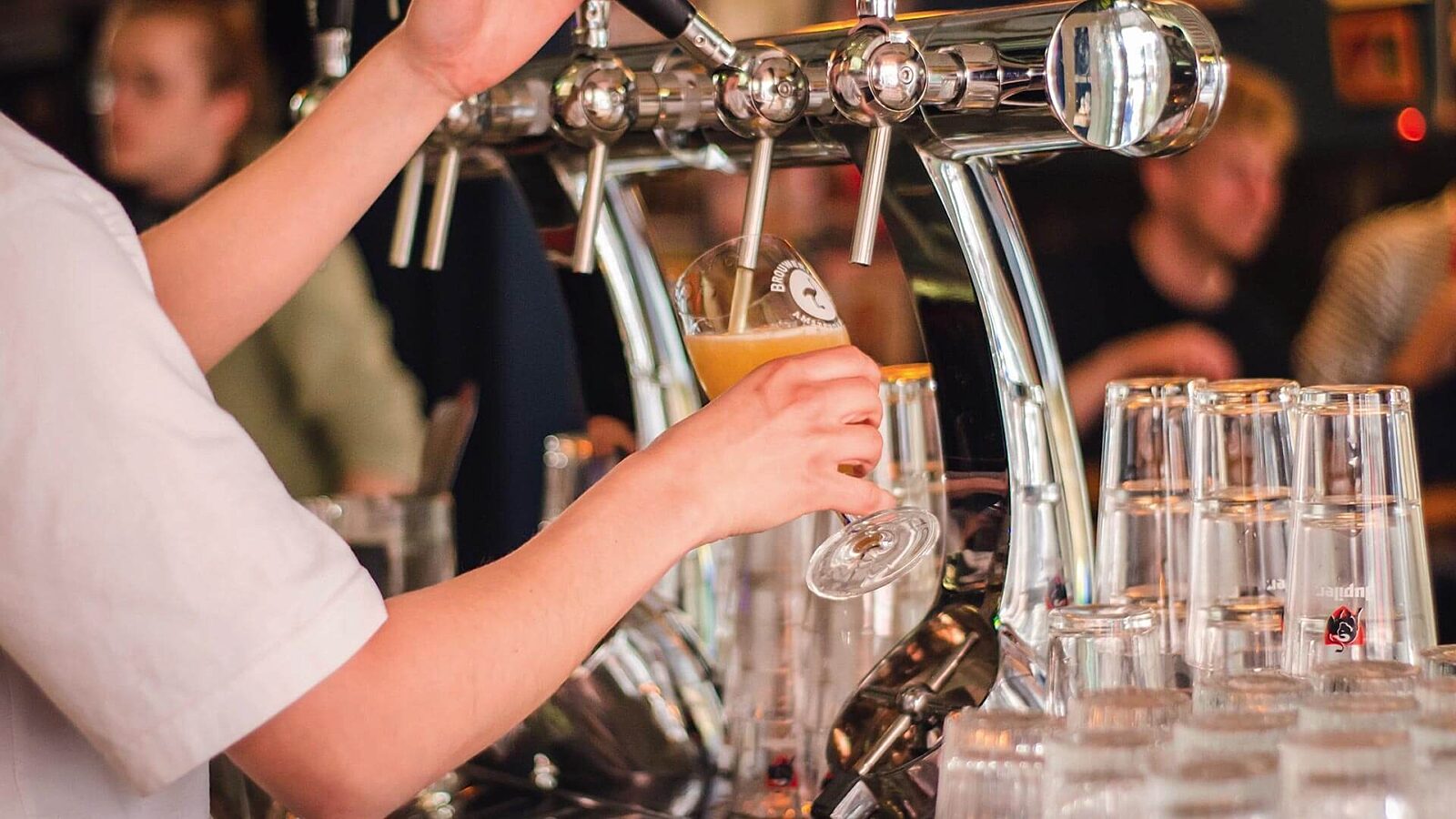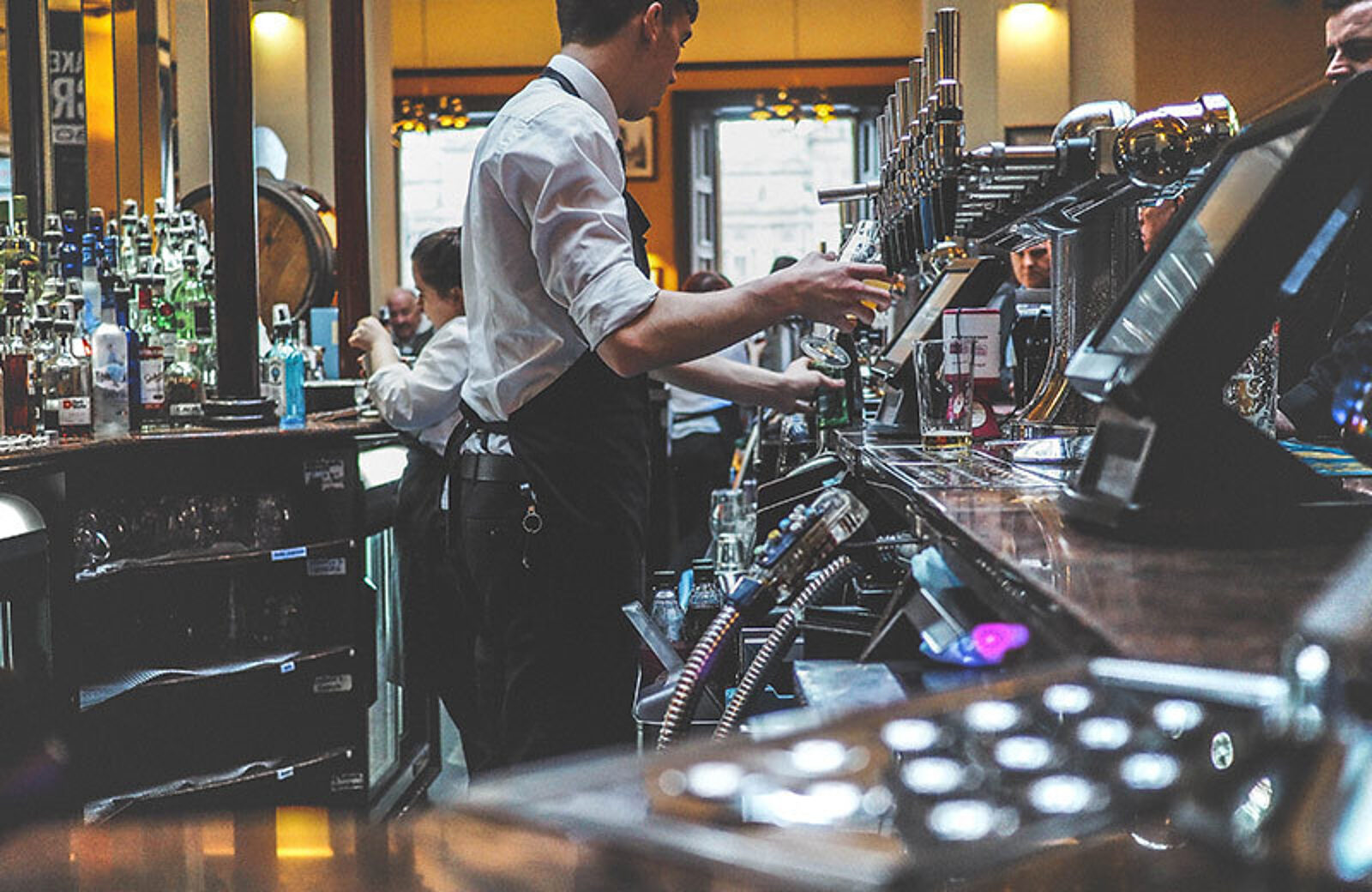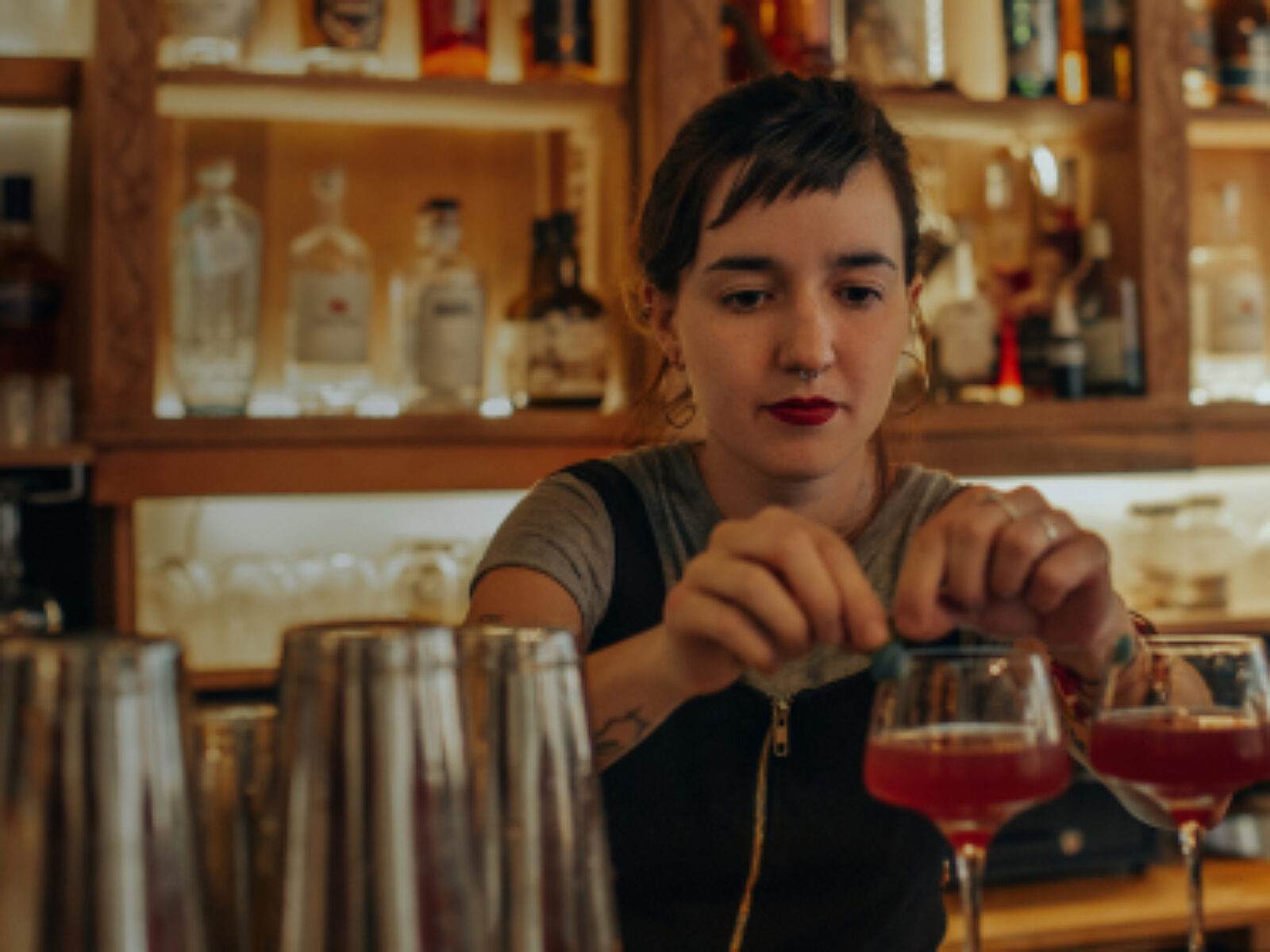
Should Bartenders Drink on the Job?
Drinking can bring a restaurant team together, but can also be a recipe for disaster.

Isabelle HahnAuthor
Bonding in a restaurant can take many forms, from telling stories at family meal to making jokes while on the line. Team building can look like saving someone’s back when they’re in the weeds, and them saving yours the next night.
And anyone with restaurant experience knows that another huge aspect of building your restaurant family is recovering from a busy service over a couple drinks — sometimes in the restaurant you just closed. It’s when your closest work relationships are formed, because you are uninhibited, free to complain about needy customers or being on your feet all day.
Your staff has easy access to food and alcohol — that’s just the nature of restaurant work. They are also in a high-stress environment that creates a need to blow off steam, which is why shift and after-shift drinking policies are so important to the health of your employees and establishment. Without these policies in place, you could find yourself entangled in a lawsuit, or even losing your liquor license.
Staff drinking policies vary at every bar and restaurant, but are largely determined by three factors: Whether staff drinking is legal in your state, whether you trust your employees, and your willingness to take responsibility for what can happen as a result of shift drinking.
The decision to allow staff to drink during a shift or immediately after is a question that the management team of every alcohol-serving restaurant will have to address at some point — and the earlier they do, the better. In states where staff drinking is legal, some restaurants and bars choose to allow bartender drinking, or even encourage it. Others avoid it like the plague.
Sean Henderson — who has managed restaurants, bars, and nightclubs in multiple states — avoids staff drinking in his establishments for numerous reasons, one being the safety of his employees and guests.
“With glass breaking, bottles flying, fire flaming, and water spilling, there's no need to add any more risk behind the bar. Any great bar manager knows that there are plenty of ways to accidentally injure yourself when you are completely sober, all of which are heightened with the addition of alcohol.”
Sean Henderson
This caution was echoed by Pomaika’i Shishido, co-owner of SP2 bar and restaurant in San Jose, California. “It’s a tough subject,” he said. “You either have to have a bar manager who’s on top of it all the time, or not allow it at all. Every establishment I’ve been a part of, there has been a strict no-drinking policy.”
But there will always be establishments that allow bartenders and servers to drink with guests during a shift, or with coworkers after. Shift drinks have been a part of team-building in restaurants and bars as long as they’ve been around, which is important to consider when building a shift drinking policy.
Why Establishments Still Allow Shift Drinking
1. It increases expertise.
By allowing your staff to drink on and after the job, you empower them to provide guests with authentic product knowledge. For bars with a niche concentration in specific beverages, a server’s ability to explain the taste difference and origin of two different craft beers or wines can make or break a sale.
“I think that the utilization of shift drinks can be a way to get that product knowledge or get people to be able to expand their product knowledge even further,” Bruce Finkelman told the Tales of the Cocktail Foundation. Finkelman owns many Chicago bars, including the popular Longman & Eagle, and encourages shift drinks at his establishments. “I think the shift drinks are a way for people to kind of explore on their own and, I think that it’s a really valuable tool to put out there,” he said.
For New York bartender Nolan Lunsford, establishing expert product knowledge was the key to getting a bartending job at a craft beer bar. “Now I get to have a say in what beer we have at the bar, because I have so many regulars and know the market,” he said.
2. It shows trust.
At the beer bar where Lunsford works, bartenders use their judgment on what’s appropriate. “We have a shift drink policy where you get one at the end of your shift,” he said. “It’s expected that we’ll do shots with customers, or taste new beers. It’s fairly liberal and based on accountability. You are in charge of the show.”
That level of trust can make a bar worth returning to every night. It helps establish regulars that will continually bring in more money, and gives your staff a reason to trust you in return. If your employees feel supported by you to make their own decisions when they’re behind the bar, they’ll take pride in what they do and be more likely to provide your guests with amazing service..
For shift drinking policies to work — and they can work, in some scenarios — that level of trust has to be showcased in every aspect of your business. And for that trust to work, transgressions should not be taken lightly. Taking things too far should have immediate consequences, including termination.
The Case Against Shift Drinking
It’s expensive.
At the end of the day, it’s the owners who are paying for their employees to drink while working. And sometimes, they find themselves paying for employees and their guests to drink for free.
“In all my years managing bartenders, I have yet to meet the mythical bartender who follows the strict pour guidelines you create for your bar when making their own drink,” Sean Henderson said.
Bar and liquor inventory tracking is hard enough. When alcohol goes out of the bottle untracked, it messes up inventory forecasting, pricing models, and bottom lines. If you have bartenders who take things too far, it could upset your entire business.
One of the most attractive reasons to allow shift drinking is to enable your staff to establish a rapport with guests and encourage regulars. Regulars are the lifeblood of any restaurant and bar and can be great marketing aids. This is why servers and bartenders will occasionally bring a round of shots to do with the table, or comp a regular’s second glass of wine. Some servers are filling their own glasses with water in these scenarios, but until you do inventory, you never know.
A buyback policy, wherein bartenders are encouraged to provide a free drink on the house after a guest orders a certain amount, can be a great alternative to allowing free drinks at random. Putting a policy in place that limits the amount of buybacks a bartender uses per shift (and specifies that buybacks come out of the server’s paycheck) will give your staff the ability to establish regulars.
2. It’s a liability.
In 2016, the Mexican restaurant chain On The Border was found liable for an employee's hit-and-run accident after that employee allegedly got drunk after his shift. According to the San Diego Union-Tribune, the franchise owner was ordered to pay $1.5 million after a jury found them responsible for the actions of the employee.
A settlement that large would bankrupt most businesses. This might be a worst case scenario, but it’s what you should prepare for.
Incidents of this variety can also threaten your liquor license, one of the most valuable assets of your restaurant. Whether your establishment does 20% of its sales in alcohol or 100%, losing the ability to sell alcohol (and having to pay the fines associated with that loss) could be a crushing blow to your business.
3. It nurtures addiction.
In 2015, the Substance Abuse and Mental Health Services Administration reported that the food service and hospitality industry has the highest rate of substance use disorders of all employment sectors. Nearly 12% of restaurant workers engage in heavy alcohol use, defined as consuming five or more alcoholic beverages in under two hours for five consecutive days.
Alcohol is everywhere in the restaurant world, and can become an even bigger temptation when you’re using it every day on the job. Anecdotes about alcohol abuse in the industry are seemingly never ending, from bartenders taste-testing enough cocktails to maintain a buzz, to managers coming in reeking of alcohol.
By allowing free shift drinks, you could be attracting employees who rely on that. Shaaren Pine of the organization Restaurant Recovery decided the restaurant she was managing enabled patterns of unhealthy alcohol use, and got rid of shift drinks. “We ended up with a much stronger team when we found people who wanted to work for us, for us, and not just because they could get shift drinks,” she said.
Drinking to take the edge off would be completely unacceptable in any other profession. If an employee needs a drink just to do their job, maybe this isn't the job or industry for them.
You can take steps to reduce your complicity in these issues by providing support and resources for employees to deal with addiction. (Read more about how to support addiction in the restaurant industry here.)
How to Incorporate a Shift Drinking Policy into Training
On-premise drinking can create a multitude of issues that could sabotage your business, so it’s important to make your policies — and the reasons for the policies — clear from the start. You will need a well-written employee handbook that details the behavior you expect from your employees at your establishment. And if you’re switching your policies from allowing shift drinking to prohibiting it, make sure you’re able to effectively communicate the policy, as well as the reasons why you’re instating it.
You can create a company culture that isn’t dependent on drinking by organizing team outings around giving back to the community or professional development opportunities. Start offering business or cooking classes to your team members so they can learn something new about the restaurant industry, while also getting to know each other.
If you view shift drinks as a benefit to working at your restaurant, consider switching to a healthier yet still attractive option, like putting that money back into paychecks, or offering a stipend for gym memberships or wellness spending.
By offering opportunities for staff to make healthy choices and establishing coherent policies, you lead by example and set up both your employees and your business for success.
Related Bar Business Resources
Is this article helpful?
DISCLAIMER: This information is provided for general informational purposes only, and publication does not constitute an endorsement. Toast does not warrant the accuracy or completeness of any information, text, graphics, links, or other items contained within this content. Toast does not guarantee you will achieve any specific results if you follow any advice herein. It may be advisable for you to consult with a professional such as a lawyer, accountant, or business advisor for advice specific to your situation.
Read More
Subscribe to On the Line
Sign up to get industry intel, advice, tools, and honest takes from real people tackling their restaurants’ greatest challenges.


